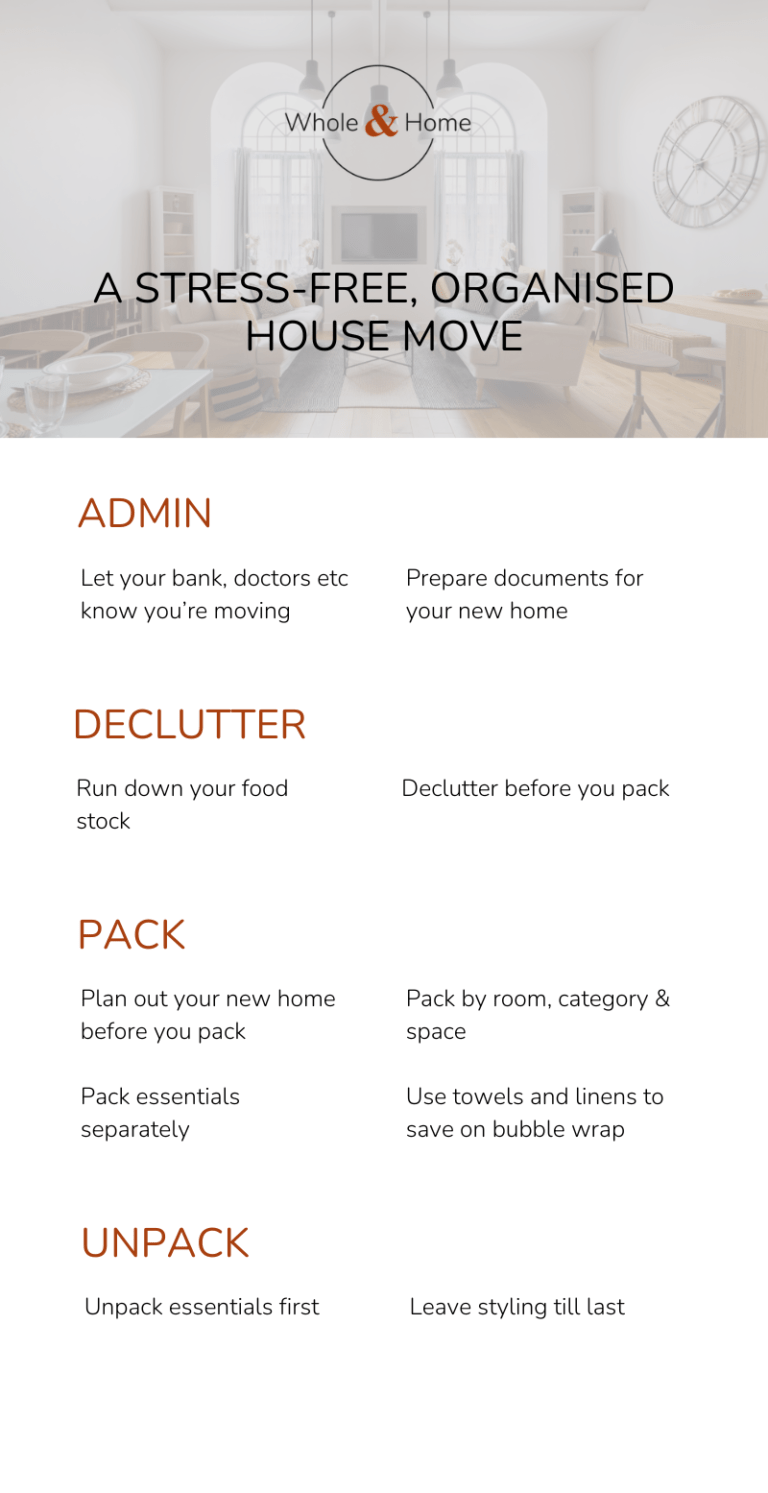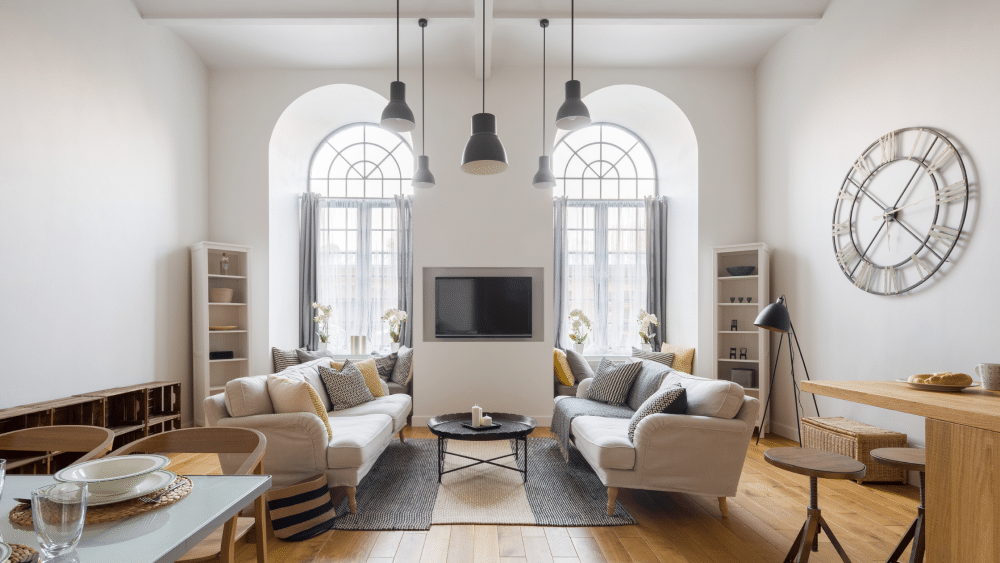Moving home is a big deal! It’s stressful and can also be exhausting – both mentally and physically. It feels like there are a million and one things to do and remember. Luckily, a little preparation can make your move quicker, easier and, dare I say, fun. Follow these steps for a stress-free, organised move and allow yourself to get excited about your new chapter.

Do your pre-move admin
Let people know you’re moving
Before you pack, write a list of who you need to inform about your move and check them off.
These may include:
- Government bodies such as the DVLA, HMRC, Department for Work and Pensions, Electoral Role
- Financial institutions such as your bank, credit card or load companies, pension, savings and investment companies
- Health providers such as doctors, hospitals, dentists, and opticians, as well as any for your pets – make sure to update your pet’s microchip or collar
- Utility providers and regular bills you pay such as council tax, TV license, energy (you might also research and consider switching), water, telephone and broadband. Book a slot to have your new WIFI switched on and remember to take a picture of your meters on moving day.
- Insurance providers for life, home, pet, car, and mobile insurance. Inform your breakdown recovery. You might also need to buy parking permits for your new home.
- Employers, colleagues and business contacts, schools, associations and clubs that you’re a member of. Book time off from work for your move.
- Companies you receive mail from, magazine and product subscriptions, reward schemes
- Friends and family
You might consider using the Post Office’s change-of-address service to make things simpler.
Admin for your new home
Prepare documents for the new tenants such as building regulations, electrical certificates, manuals, and information on bin collections.
Finally, research and book your moving company.
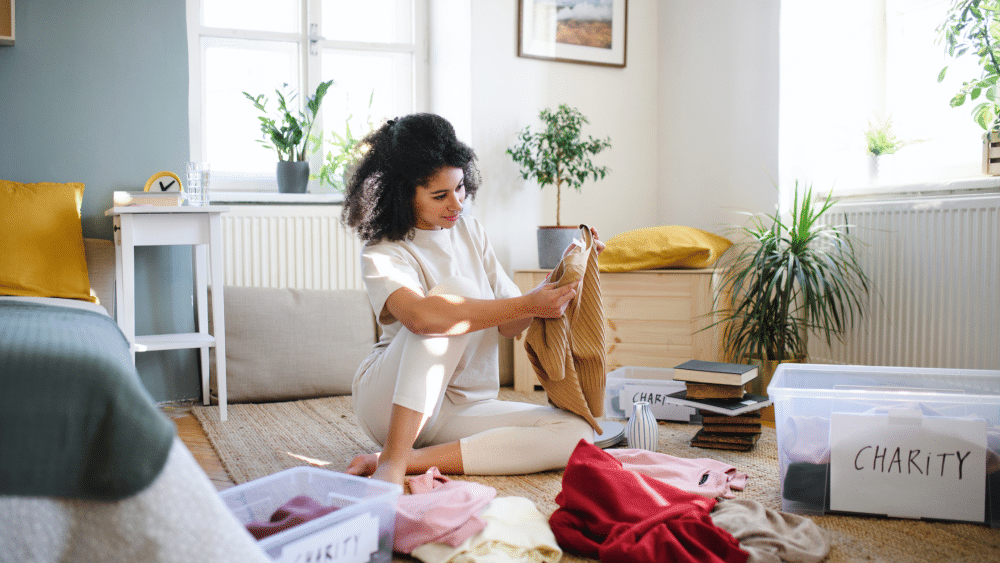
Declutter before you move
Run down your food stock
In the weeks and months leading up to your move, focus on running down your food stock. Go through and throw away anything that’s out of date. Be honest with yourself about the type of food you like to cook and eat and throw out anything you’re realistically never going to cook. If the food is in date, donate it to a shelter or food bank. Make sure to keep a list of foods that you finish but eat regularly to make it easier to do your first shop in your new home. You might start a shopping cart for these items and even book a delivery slot for the day after you move (you’ll be too busy on the day).
Declutter your home
Decluttering your home before a move makes moving lighter work, but it’s also a great cleansing activity – getting rid of all the old in preparation for your new start. You can do this before or as you pack. Hold every item and ask yourself whether you love or use it and whether it serves you. Doing this will make you feel much more positive about your move.
Start at least two to three weeks before your move. Pick the room or area you use the least to begin and make sure you have bags or boxes labelled with ‘rubbish’, ‘recycling’, ‘donate’, and ‘mend’. Make sure you empty these regularly and don’t let them build up. Try to fix everything that needs fixing before your move to save yourself the work later. Separate the items you’re keeping into ‘pack now’ or ‘using – pack later’ categories.
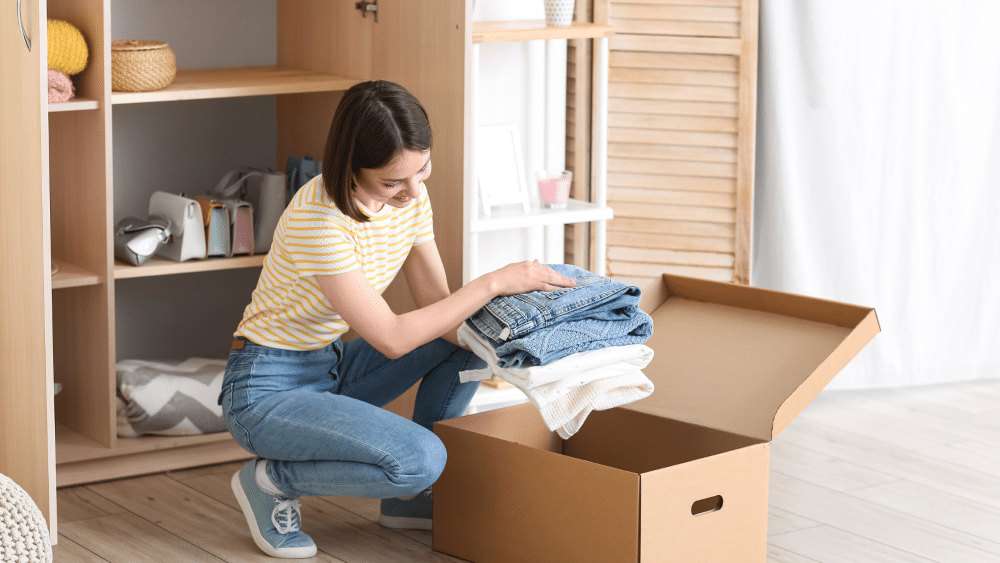
Pack efficiently
Create a plan of your new home
Before you pack, it’s a good idea to come up with an unpacking plan. Draw a floor plan of your new home, and think about what you’re going to use each room/area for and where your furniture will go. Next, list all the items that go in each space. You might go so far as to plan what will go in each drawer and cupboard. If you can do this, it’ll make unpacking so much quicker.
Use your plan to know what items to pack together. For each room, reserve a box labelled ‘essentials’ for the things you use a lot so that you know what to unpack first. For kitchens, it’s things such as mugs and kettles; for bedrooms, it’s your bedding.
Pack by room, category and space
Pack styling items such as vases, plant pots, ornaments, photos, candles and other display items separately.
As you pack, be sure to separate items into categories and label them according to where they go. For example, put the contents of a three-drawer bedroom cabinet in three separate containers or zip-lock bags and label them ‘bedroom cabinet top’, ‘bedroom cabinet middle’ and ‘bedroom cabinet bottom’. If you don’t have time for such detail, ‘room’ and then ‘category’ will suffice.
Packing tips
If you don’t want to waste money or space on bubble wrap, you can use textiles to wrap breakable items. Just be careful to do it thoroughly and use the appropriate cloth for the room – for example, you might use tea towels or napkins to separate plates.
Use a marker to label each box with ‘room’ and ‘content, or use a different coloured post-it note for each room to make it even quicker.
Lastly, pack a suitcase for yourself and every family member with enough essentials to last you a week. Think clothes, essential toiletries, phone chargers, school or work-related items, and things for entertainment. It takes the pressure off by removing the urgency with which you need to unpack.
Clean your home as you go so that you need only do a quick whizz around on moving day.
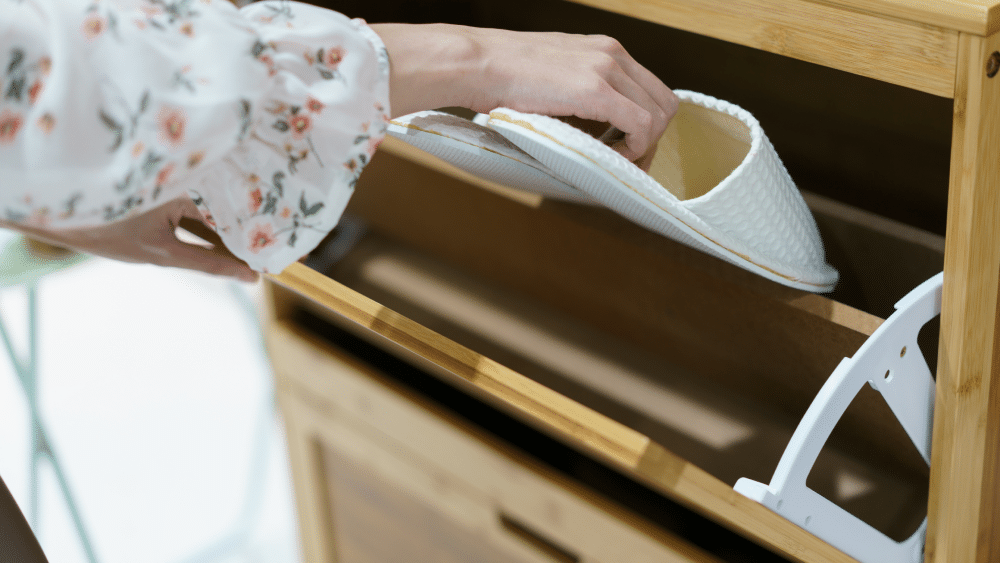
Unpack with ease
If you’ve done all the previous preparations, unpacking should be a pretty simple job.
Start by positioning your furniture and unpacking your ‘essential’ boxes. Once every room is in a livable condition, you can start unpacking your other items, working in order of priority. If you can’t make a plan before your move, don’t just start unpacking aimlessly. Instead, stop for 10-20 minutes and make a plan for each room as you go. It might seem to be a waste of time, but it will save you time eventually.
Need more help? Read my post on unpacking after a house move.
Finishing touches
Although it’s tempting, try to leave the boxes with your styling items until after you’ve unpacked and organised everything else. The styling part, while fun, takes a lot of time and consideration. It’s easy to get caught up doing it, and before you know it, the whole day will have passed, and you’ll have hardly unpacked a thing.
Saving your candles, photos and ornamental items until last helps you to unpack more quickly. Let styling be the reward for your hard work and act as a motivator, then putting in these finishing touches will make your calm and organised house feel like home.
If you have a house move coming up and you’d like some help with all or part of it, get in touch via my contact page.
